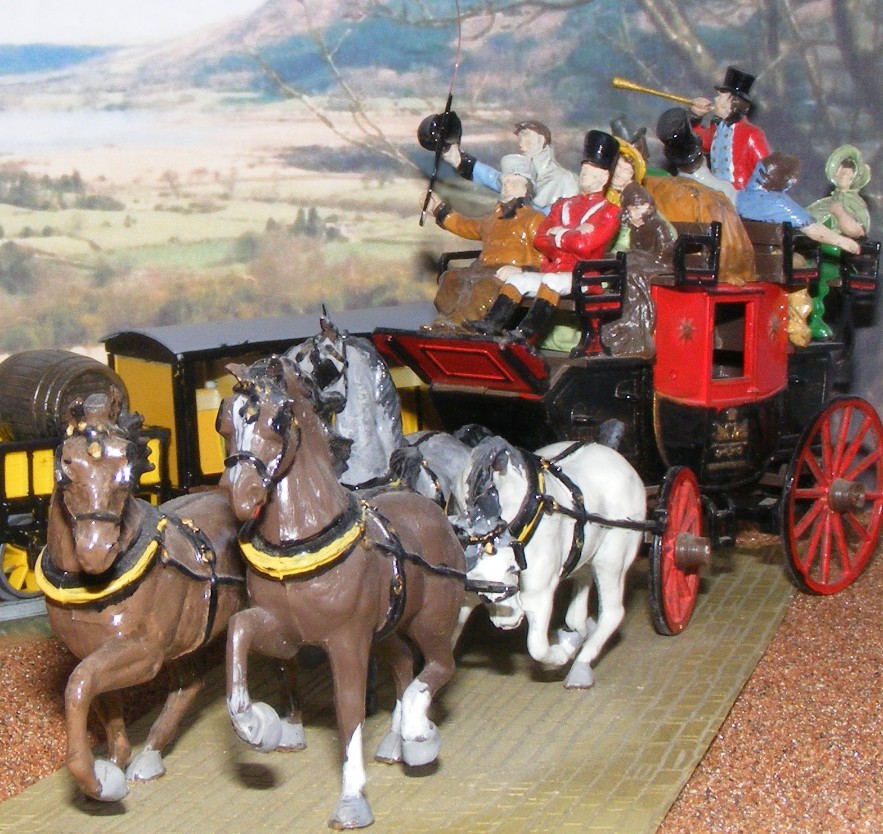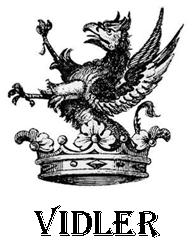
The passenger coach can be traced back to the 13th century when the first crude image appears in an English manuscript. The movement of trade goods and people was often done by water rather and road as roads were merely tracks in the dirt. As time progresses the network of tracks broadened and for non breakable, non perishable goods transport by road became a little more feasible; at least for short journeys.
But the time it took to go anywhere on the unmade roads of that era was a problem. When Emperor Charles the 1st visited England in 1703 he journeyed from London to Petworth, Sussex. A distance of a mere 50 miles, it took 3 days and the coach turned over 12 times. Men needed to be hired to walk alongside the coach to hold it upright and push! Even in summer things weren't much better. London to Dover still took 3 days and the journey to York would, at best, give an average speed of 4mph.
Needless to say few people travelled far from home.
AND even back in 1662 there was opposition to any form of mass transport, a certain Mr. Cressett wrote "this annihilating of distance, will encourage men to journey to London just to have their hair cut, and their wives too!"
During the late 1700s and early 1800s the explosion of the industrial revolution saw the expansion of towns and cities as well as the many goods that could now be made much more quickly. This higher output of goods needed ever bigger markets to sell in and therefore ever better, and quicker, transport to these markets.The knock on effect was better communications for travellers too.
The advent of the Royal Mail added to this growing travel industry as business messages needed to be quickly and securely transported, however, the roads and carriages were lagging behind the times and needed improvement. While Telford and MacAdam improved roads and Trevithick, Hancock and Gurney made road going steam vehicles the standard horse coach designs of the era were evolving too.
It was the postal service introduced in 1635 that really helped establish a proper passenger service. The postal service consisted of mounted post boys who rode between "posts" where the postmaster would take the letters for his local area and add any new letters to the remaining letters for the next rider to take on to the next post. In 1782 John Palmer of Bath proposed a new reorganised service which could see coaches covering the Bristol-Bath-London route in 17 hours, against the 38 hours taken by the riding post. The zenith of the coaching era was reached in 1835. at that time there were 700 mail coaches & 3,300 Stage coaches running regularly on the roads of Britain, 35,000 people were employed as Coachmen, guards and horse keepers, and indirect employees could have been as many again, gainfully providing fodder and as dung carriers.
In the late 1700s passenger coaches were unsprung, prone to loosing wheels while travelling and generally heavy and slow. Average speed was all of 5mp.
One of the notable figures in improving the design of coaches was John Besant. In 1792 Besant introduced a new mail coach design. His coach had a more effective “band” braking system, could turn in a tighter circle without danger of turning over and most importantly had a novel method of preventing the wheels from coming off while the coach was moving. This design was still not wholly successful and a further improved design was produced in 1795. John Besant joined John Vidler as a partner and together they built the best coaches of the era becoming suppliers of coaches to the Royal mail who exclusively bought Vidler coaches for 14 years. Besant and Vidler not only cornered the GPO contract for coaches but also became almost exclusive in the business of repair and servicing of the coaches too.
Our impression of stage coaches is what a wonderful way to travel. But things weren't as appealing as they appear on a painting or Christmas card. Many vehicles described as ‘coaches’ would have been covered stage-wagons carrying passengers and goods.
There was no road congestion- There were no proper roads either.
For the full fare you travelled inside the coach, in comfort- On a lovely 'wooden' seat.
Or for half the fare you could ride on top- On another wooden seat!
From your seat high up atop the coach you could feel the breeze on your face- And the rain and sleet and snow.
You have a wonderful view of the countryside- And of the tail end of some horses.
You can breath in the wonderful smell of the country- And smell what comes out of the tail end of the horses!
Seriously, reality paints a different picture, several hundred deaths occurred each year through accidents. The Main causes being Hyperthermia, (‘outsiders’ found frozen to death), overturning due to axle/ wheel breakages, over locking, and, with no brakes, downhill runs depended on the horses to control the speed.
Journeys by coach were considered to be marginally more hazardous than sea voyage, BUT fractionally more comfortable!
Our model here is a Standard pattern Mail Coach as built by J. Vidler's at Millbank, London. This one hails from 1827 and it remained in production until 1842. The designer, Besant, and the coachbuilder, Vidler, Had a monopoly on mail coaches for many years so many of these vehicles were built and went into service all over the UK. From 1842 the monopoly was broken and many famous coachbuilders of the early years of the motor industry finally got a chance to become successful. Mulliner, usually associated with the cream of British Automobiles, was one such company. Vidlers on the other hand simply faded away.


1/32nd scale kit.
Built by Rod.
Rod built this model in the early 1970s and as one of the earlier models of the collection it reflects the modelling know how of the day. Made from a Life-like Hobby kit, "Tally Ho Passenger Coach" kit # 09672, which is currently out of production and not easy to obtain, it is all brush painted with Humbrol enamel paints.
Of some interest is that Rod had been able to obtain a new form of adhesive by this time. Methyl Ethyl Ketone, MEK, a liquid solution applied by brush. It proved considerably better than tube glues. It could be more accurately applied than tube glue and set much quicker. Over the next few years an increasing number of similar products came onto the market and by the 1980s most serious modellers had abandoned tube glue in favour of liquid adhesives.
RETURN TO -


